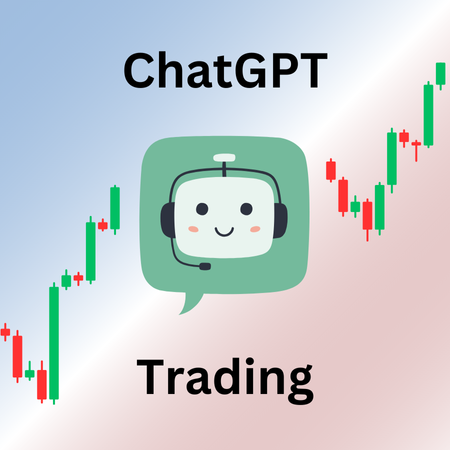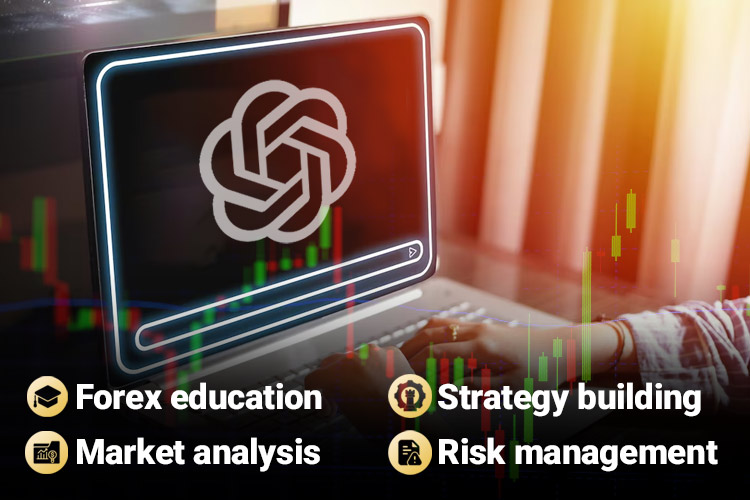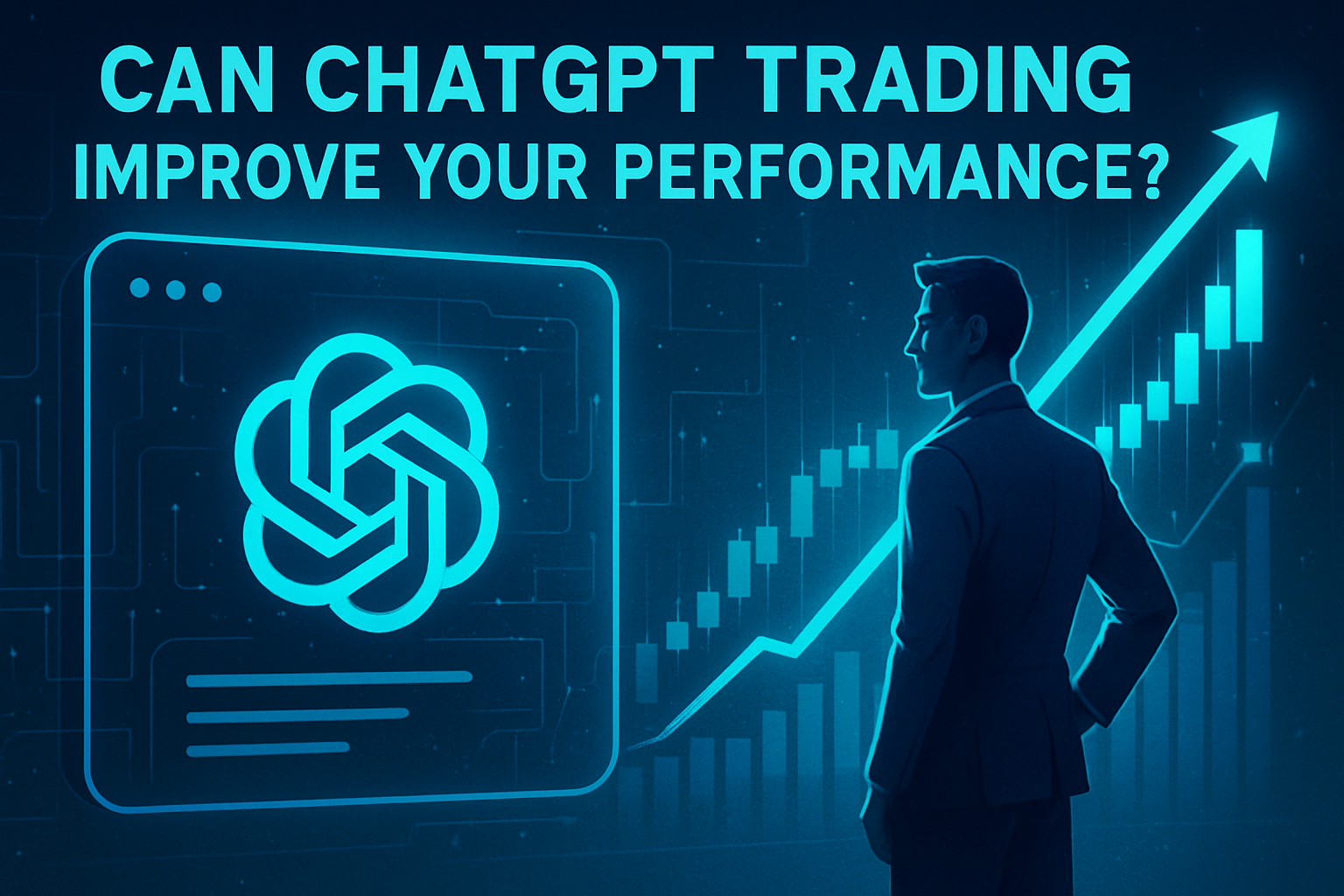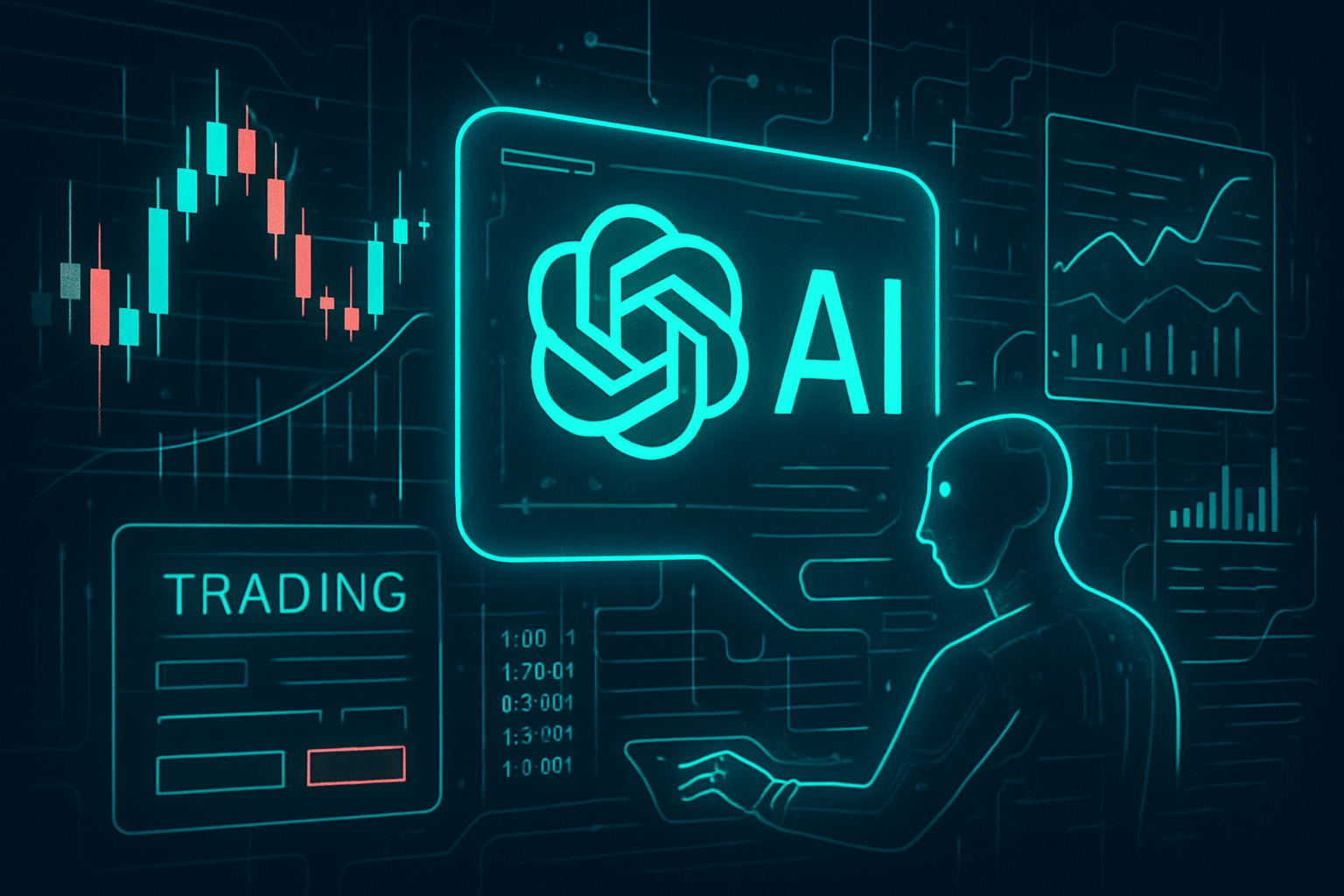Artificial intelligence is transforming the financial world, and nowhere is this shift more visible than in ChatGPT trading. Around the globe, traders are discovering how using ChatGPT for forex trading can enhance research, develop strategies, and even automate parts of their workflow.
In this guide, we’ll explore what ChatGPT trading means, how traders are using it across forex, stocks, and crypto, and whether AI-powered trading tools like ChatGPT can truly make a difference.
What Is ChatGPT Trading?
ChatGPT trading refers to the use of OpenAI’s ChatGPT or similar AI models to support trading activities from analyzing news headlines and generating trading strategies to summarizing market reports or scripting algorithmic trading bots.

Unlike traditional tools, ChatGPT for forex trading enables traders to interact with market concepts through natural language. You can ask complex questions like “How to use ChatGPT for forex trading?” or “Can ChatGPT trade stocks?” and receive detailed, data-driven insights in seconds.
For beginners, this is a powerful edge. It’s like having a personal AI trading assistant capable of explaining indicators, testing strategies, and clarifying financial news, all tailored to your trading goals.
How Traders Use ChatGPT for Trading
Today, ChatGPT traders use the technology across multiple markets such as forex, stocks, crypto, and futures to speed up research and decision-making.

Research & Analysis: Traders use ChatGPT for trading analysis, summarizing news, economic reports, and company earnings.
Education: Beginners use ChatGPT trading tutorials to learn about candlestick patterns, options strategies, or algorithmic systems.
Automation: Developers use ChatGPT trading bots and code generation to create or refine trading algorithms.
Sentiment Detection: Some feed ChatGPT with headlines or social media data to gauge market sentiment before trading.
While ChatGPT cannot trade stocks or forex directly, it accelerates preparation, validation, and learning the foundation of better trading decisions.
Pros And Cons Of ChatGPT Trading
Before using ChatGPT for trading, it’s important to understand both its strengths and limitations. Here's a quick comparison of its key advantages and drawbacks.
| Pros |
Cons |
| Processes large amounts of financial data quickly |
No access to real-time market feeds |
| Generates trading ideas and strategy insights |
Information may be outdated or incomplete |
| Easy for beginners to understand complex topics |
Lacks human intuition and emotion awareness |
| Works across forex, stocks, and crypto markets |
Risk of over-reliance without verification |
Can ChatGPT Trading Improve Your Performance?

The short answer is yes, if used correctly.
Can ChatGPT trade stocks for you? The answer is no. Using ChatGPT for trading can dramatically improve productivity and research efficiency. Traders can backtest logic, write scripts, or learn new concepts faster. However, ChatGPT is NOT a replacement for trading discipline, emotional control, or experience.
ChatGPT trading strategies work best when integrated with market data, risk management, and manual confirmation. Think of it as your research partner, not your signal provider.
Best Alternatives and Tools to Pair with ChatGPT
While ChatGPT is powerful for research and strategy ideas, it doesn’t provide live data or trade execution. Pairing it with the right tools can complete your trading setup and make your workflow far more efficient.
1. TradingView – Ideal for charting and technical analysis. You can use ChatGPT to generate trading ideas, then test and visualize them directly in TradingView.
2. MetaTrader 4/5 (MT4/MT5) – Popular among forex traders for executing trades and backtesting strategies. ChatGPT can help you write or refine indicators and scripts before applying them in MT4 or MT5.
3. Excel or Google Sheets – Useful for data tracking and journaling. You can ask ChatGPT to generate templates or formulas to analyze performance and track metrics over time.
Together, these platforms bridge ChatGPT’s intelligence with real-time market access, giving traders both analytical depth and practical execution power.
The Future of ChatGPT in Forex and AI Trading
As OpenAI ChatGPT trading features continue to evolve, integration with brokerage APIs and live charting tools will likely become standard. Expect ChatGPT forex trading bots, AI trading platforms, and ChatGPT investing assistants to become more common among both retail and institutional traders.

However, with power comes responsibility. Regulators may soon address the ethical and data-security implications of AI trading bots and automated trading using ChatGPT.
In short, ChatGPT trading is here to stay, but success will depend on how traders combine it with proven methods, strategy, and discipline.
FAQs About ChatGPT Trading
1.What is ChatGPT trading?
ChatGPT trading refers to using OpenAI’s ChatGPT to assist in trading analysis, research, and strategy creation. Traders can use it to interpret market news, generate trade ideas, or even build algorithmic trading bots. While it doesn’t execute trades, it acts as a powerful AI assistant for decision support.
2. Can ChatGPT trade stocks or forex?
No, ChatGPT cannot directly execute trades in the stock or forex markets. However, it can help you build scripts, analyze sentiment, or test ideas. Some developers integrate ChatGPT with APIs or platforms for semi-automated AI trading workflows.
3. How to use ChatGPT for trading effectively?
To use ChatGPT for trading, combine it with your preferred tools. Ask it to summarize data, design trading prompts, or explain strategies. Then verify its outputs with real-time data before making trades. Use it to enhance thinking, not replace it.
4. What are ChatGPT trading strategies?
ChatGPT trading strategies are methods developed using AI insights such as mean reversion, breakout detection, or momentum models. Traders use ChatGPT to brainstorm and backtest these ideas faster. It’s a creative tool to refine strategies, not an autopilot system.
5. Is ChatGPT good for trading beginners?
Yes. ChatGPT for traders is especially helpful for beginners. It simplifies financial terminology, helps understand indicators, and explains risk management in plain language. It’s like having a mentor who’s available 24/7 to guide you through learning and practice.
6. Can ChatGPT help in forex or crypto trading?
Absolutely. Many use ChatGPT for forex trading or ChatGPT for crypto trading to analyze patterns, create scripts, and summarize news events that affect price movements. It can’t predict markets, but it supports faster, more informed analysis.
Conclusion
ChatGPT trading is changing how traders research, plan, and analyze markets. It bridges the gap between professional insights and individual accessibility, offering AI-driven tools that enhance decision-making across forex, stocks, and crypto.
However, forex traders should always remember: ChatGPT is a guide, not a guarantee. When combined with real data, discipline, and experience, it becomes one of the most valuable tools in a trader’s arsenal.
Use ChatGPT for trading wisely and it can truly help you trade smarter, not harder.
Disclaimer: This material is for general information purposes only and is not intended as (and should not be considered to be) financial, investment or other advice on which reliance should be placed. No opinion given in the material constitutes a recommendation by EBC or the author that any particular investment, security, transaction or investment strategy is suitable for any specific person.

























